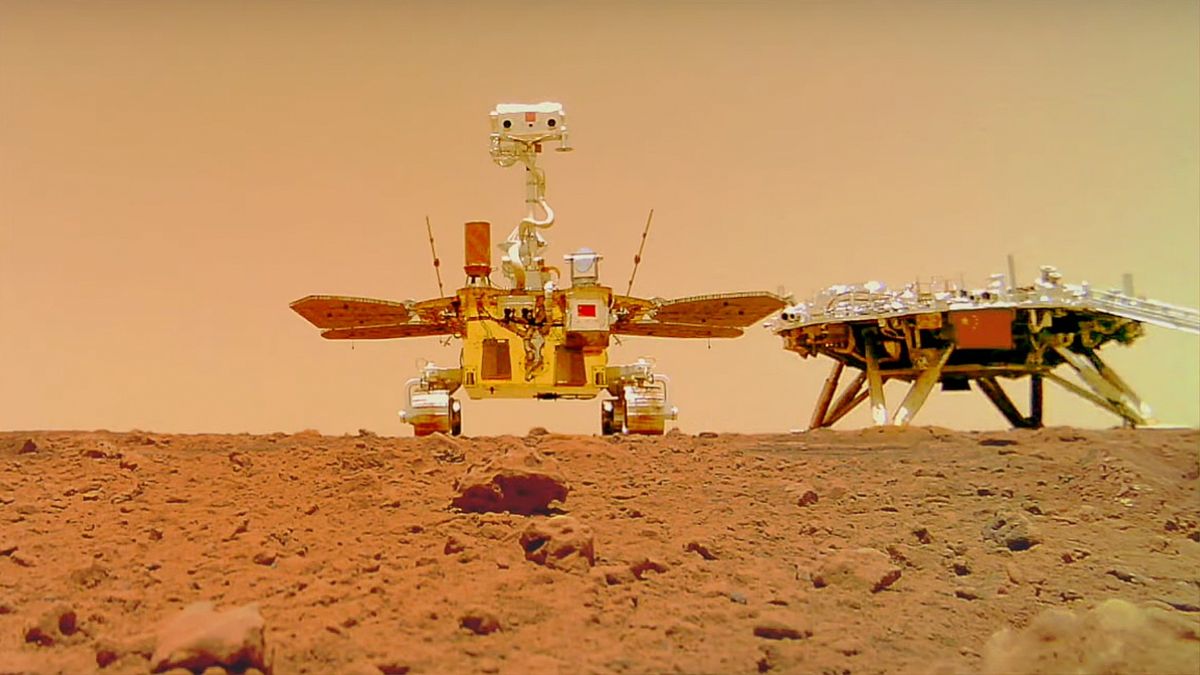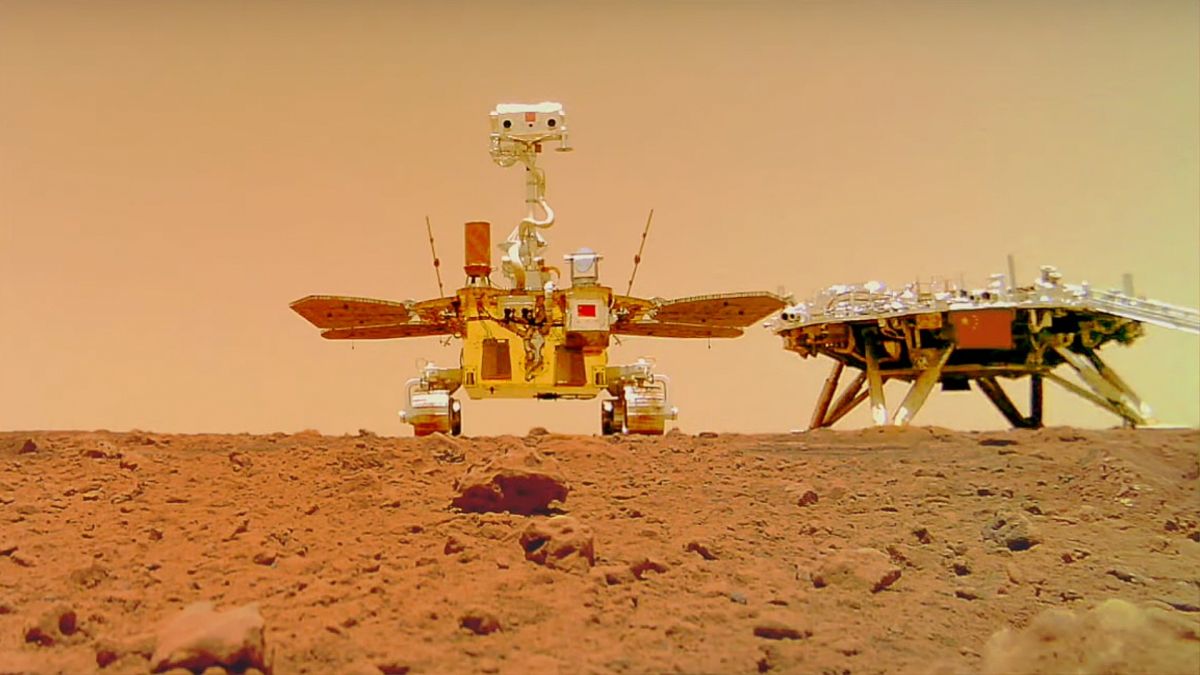
Data collected by China’s Zhurong rover shows seasonal changes in the strength and direction of winds on Mars.
Zhurong launched in July 2020 along with the Tianwen 1 mission orbiter and landed in the large plain of Utopia Planitia in May 2021. Among its science instruments is the Mars Climate Station (MCS), designed to provide new insight into meteorological activity on the Red Planet.
An initial analysis of MCS data shows that surface pressure on Mars varies greatly from sol to sol (Martian days) while also having seasonal variations. Air temperature ranges and its seasonal changes are also reported, with the average temperature recorded during the mission by Zhurong about 268 Kelvin (22.7 degrees Fahrenheit or minus 5.1 degrees Celsius) and the lowest is about 218 K (minus 67 degrees F or minus 55 degrees C.
Related: Mars’ atmosphere: Facts about composition and climate
Wind data from Zhurong was also collected over the course of half a Martian year, from early summer until around fall equinox in the northern hemisphere. It shows changing wind patterns, with a maximum recorded wind speed of 54.8 feet per second (16.7 m/s) or 37 mph (60 kph).
The wind blew close to true south from the northern summer solstice, shifting to southeastwards until the northern fall equinox. The data adds to payloads collecting meteorological data aboard the InSight and Perseverance missions, helping to provide a more global understanding of weather on Mars.
The research was published (opens in new tab) in the journal Nature on Feb. 27, assessing meteorological data returned from the first 325 sols of the Tianwen 1 mission.
Zhurong traveled 6,302 feet (1,921 meters) south from its landing site across the time of an Earth year. The rover has notably revealed complex layers beneath the surface of the Red Planet using its ground-penetrating radar, as well as found evidence of how ancient water altered rocks on its surface.
RELATED STORIES:
The status of the Zhurong rover itself is currently unknown. The solar-powered rover entered hibernation in May 2022 due to the approaching winter in Mars’ northern hemisphere and was expected to resume activities autonomously in December.
Chinese space authorities have not provided an update on the rover, however. Images recently taken by NASA’s Mars Reconnaissance Orbiter confirm that the rover has not moved in months. It is unknown if Zhurong can reactivate itself as lighting and temperature levels increase on the Red Planet.
Follow us @Spacedotcom (opens in new tab), or on Facebook (opens in new tab) and Instagram (opens in new tab).



